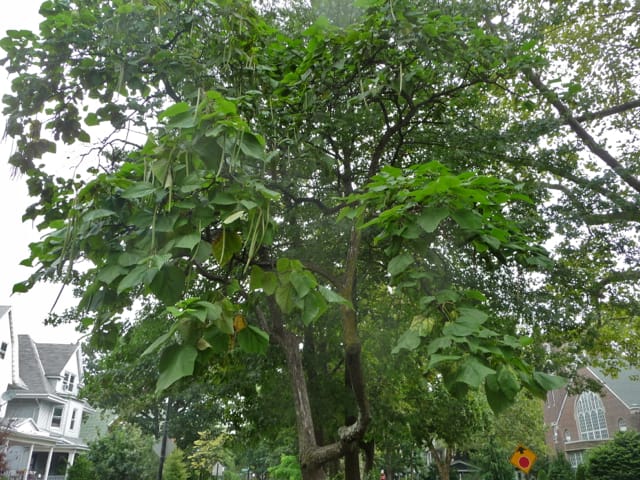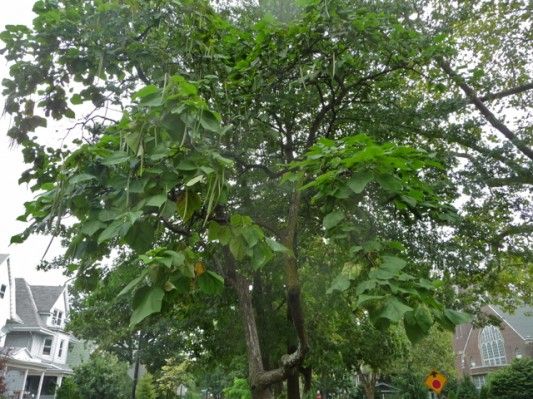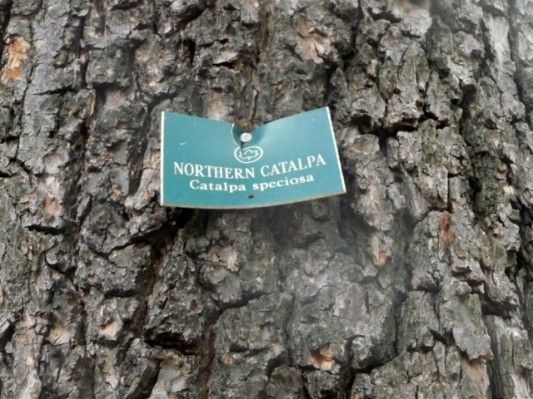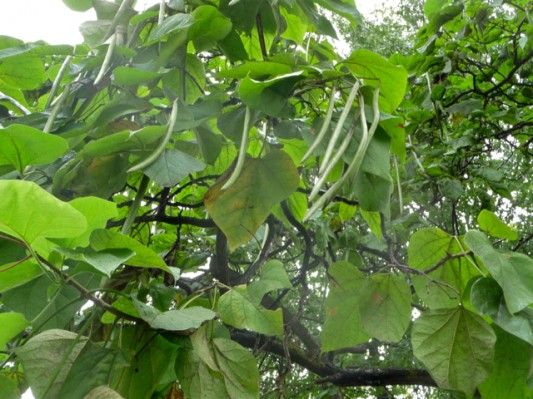Name That Tree: Northern Catalpa



Scattered around the neighborhood are several twisty trees with broad leaves and long, thin pods. One of those trees, on Westminster between Cortelyou and Dorchester, was helpfully labeled by a neighbor at some point–it’s a northern catalpa, which can grow fairly large and has about a 60-year lifespan.
They flower in the spring, and those blossoms are said to be good for honeybees. The wood is rot-resistant, so people have used it for things like outdoor furniture and boats, fence posts and railroad ties.

The pods turn brown in the fall and give the tree one of it’s nicknames–the cigar tree. I’ve occasionally seen people gathering the pods from the trees, which has been something people have been doing for a long time, according to the USDA:
Pioneer doctors used the seed pods and seeds to make a decoction for chronic bronchial affections, spasmodic asthma, labored breathing and heart problems. The juice from either the leaves or roots was used to treat swelling of an eye or cutaneous affections. Green leaves were crushed and placed on swollen lymph glands. The bark was dried then ground to a powder and taken, or brewed in a tea and taken for swollen lymph glands.
Modern pharmaceutical research has shown catalpa trees have diuretic properties.
Besides the tall, labeled one on Westminster, there’s a smaller one on the Glenwood Mall at Westminster, a very large one on Rugby between Dorchester and Ditmas, and yet another big one on Marlborough between Ditmas and Newkirk. Any others you’ve noticed in the neighborhood?




